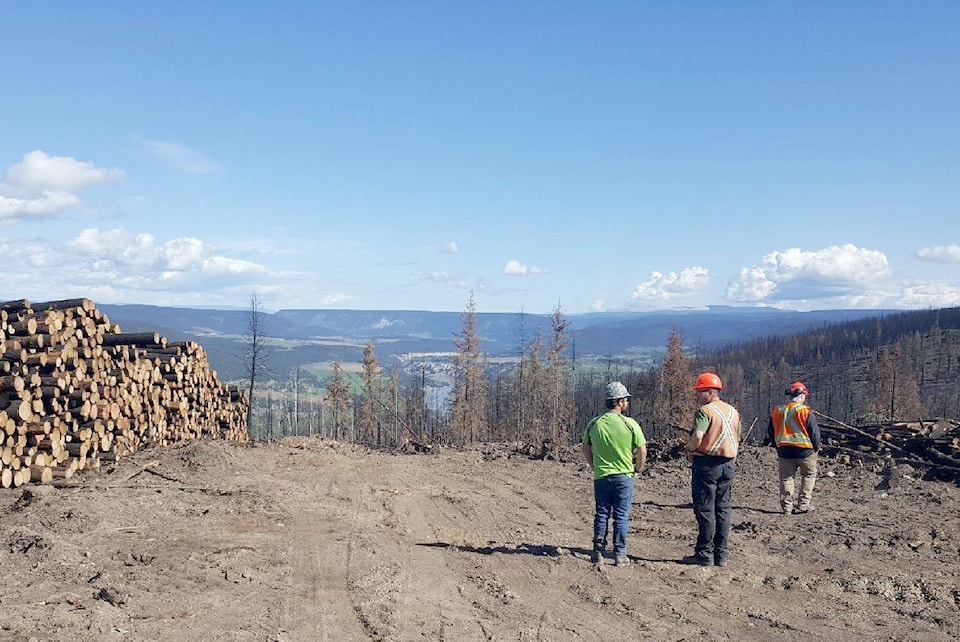Harvesting of timber from areas impacted by the 2017 wildfires continues to be a main focus for West Fraser in Williams Lake.
Since May 1, 98,000 cubic metres of burnt timber, mainly Douglas-fir, or 1,687 trucks loads have been delivered from Bald Mountain near Riske Creek and Slater Mountain just north of Williams Lake, behind West Fraser Sawmill.
“Our cutting permits lent themselves to logging in May and early June, which is normally too wet, but the flip side of that is you get into fire season, so we are wrapping things up now as the extreme fire hazard starts coming into those areas out west and here,” said Mark Runge, woods manager for West Fraser in Williams Lake.
So far the quality of the burned wood has been OK.
Because the wood died a year ago, it will get drier and start to crack as it ages.
“We think we will see a decline in the lumber grades we get after the summer and going into September and October,” Runge said. “We’ve also stopped using it for plywood as of the end of break-up because the moisture content has dropped too much. It is still making good lumber though.”
READ MORE: Mennonite volunteers help wildfire victims rebuild homes
About 40 per cent of the burned wood has been trucked to West Fraser mills in 100 Mile House and Chasm.
West Fraser received two permits to cut approximately 227,000 cubic metres total of the burned wood.
Aside from harvesting, the company is also replanting seedlings at Bald Mountain.
“We’ve started site preparation and planting seedlings. It’s a trial to test our site prep and we’ve planted about 5,000, but we will do the main planting next year because it’s normal to go behind and plant after logging.”
Workers dug a trench with a cat to create a depression that will accumulate snow and provide moisture and shade for the seedlings.
There has been some harvest of trees not impacted by the fires, that were Douglas-fir beetle infested.
“We had to get them quick to the mill in the spring while the beetles were still in them,” Runge said.
“We got very short on veneer logs for the plywood plant and were down to four days’ worth for a couple of week because of the burned wood harvesting going on and the rain in June mudding us out. We are building it back up rapidly now.”
About 300 employees work at the plywood plant and 150 at the sawmill, plus logging contractors.
After the wildfires, a small number of workers did not return — two at the plywood plant and three at the sawmill.
Do you have a comment about this story? email:
editor@wltribune.com
Like us on Facebook and follow us on Twitter.
